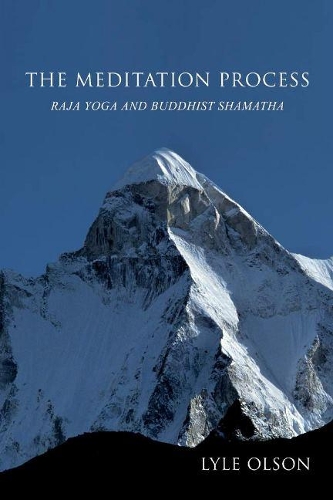
The Meditation Process: Raja Yoga and Buddhist Shamatha
(Paperback)
Publishing Details
The Meditation Process: Raja Yoga and Buddhist Shamatha
By (Author) Lyle Olson
BookBaby
BookBaby
31st October 2019
United States
Classifications
General
Non Fiction
Mindfulness
Physical Properties
Paperback
294
Width 152mm, Height 228mm, Spine 15mm
607g
Description
Book description long
This is a study of concentration meditation practices for intermediate and beginning meditators. As soon as the eyes close, the meditator is faced with a flurry of thoughts and a multitude of obstacles. The beginning meditator will find many solutions to common problems with sitting posture, breathing, dealing with thoughts and relaxation.
For intermediate meditators, the meditation process removes colorations covering the mind; uncontrolled thoughts, unfinished business, concepts, and attachments. When the aim of meditation is transforming the mind, it becomes a more serious business requiring much skill and patience. The foundation for serious meditation is the ancient practice of concentration: cultivating one-pointed attention on a meditation object, the process common to Raja Yoga and Buddhist Shamatha. Based on 40 years of wide experience, study (280 citations), and gathering pointers from many adepts, this is practical study on handling distractions, nostril balance, understanding brain hemisphere functions, establishing one-pointed mind, turning mind inward, deep relaxation, non-attachment and lifestyle, using mantras, and awareness.
It's helpful to have a map describing the stages of meditation; to know where you are going, how you are getting there, and when you are going off course. This is an experiential book; a close look at what meditator actually does during sitting with minimal attention given to philosophy. It is not a religious or even a spiritual book, but provides concise, straightforward help on the how-to-do without burying the essential points in a muddle of words.
The 66 photos, taken over a 15year period in India and Nepal where the contemplative lifestyle is visible, help to make it a personal reality for the reader.
The need for this book:
Many skills in the art and science of meditation need to be developed into a process of quieting and purifying the mind, but trial and error is too slow. It is usually a long process, measured in decades, which doesn't give the meditator time to waste. Whether the aim is transformation of mind, a search for truth, enlightenment, or because of its many other benefits, this book gives access to the best help I have found.
Interest in meditation is growing rapidly. In 2017, 14% of Americans said they have practiced meditation in the past year, up from 4% in 2012*. The nature of most current meditation tends to be 1020 minutes of calming and centering attention, a helpful beginner's practice for getting a handle on daily mind. The beginner is usually given a simple set of instructions. But as soon as the eyes close, the meditator is faced with a flurry of thoughts and a multitude of obstacles, and the search for help begins. Pointers can be found here and there but most of the literature repeats the beginners instructions or is written by and for those who are quite advanced. In between the beginners and the adepts are the vast majority of intermediates who need thorough and practical advice.
Advanced practice begins when the student is ready. When Patanjali begins teaching the Yoga Sutra, he assumes the student comes prepared with one-pointed mind. "Now we shall begin" Yoga Sutra 1:1. Likewise, in Buddhist practice, attaining the "calm abiding" of Shamatha is important, if not essential before Vipashyana, Insight, and the higher practices begin.
*National Health Interview survey, https://www.cdc.gov/nchs/nhis/index.htm
Author Bio
Lyle Olson discovered philosophy and a love of inquiry at St. Olaf College. Upon graduating from the University of Minnesota, he ventured west to teach in Montana while continuing his studies. With a Masters in Counseling from Montana State University, he eventually retired as a high school counselor/teacher. But there were still the perennial questions to be pursued such as what is life for He turned to the study of various traditions and Eastern philosophy, finding that they always included meditation as a core practice. To get a good grounding in meditation and gather the best practices from various traditions, he entered the graduate school in Yoga Science & Philosophy at the Himalayan Institute. He served as photographer for Yoga International and the Institute for 15 years including 2 years in various ashrams in India plus experiencing a variety of other Yoga and Buddhist meditation settings. He now lives in the Salish Mountains of NW Montana with lots of nature, critters, and books.
